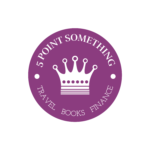BJ Fogg is a researcher and expert in behavior change who developed a method called “Tiny Habits.” The Tiny Habits method is a simple and effective approach to creating new habits by making small changes to your behavior. Here is a detailed summary of the Tiny Habits method:
1. Building Habit is a 4 step formula:
- Start with a Tiny Habit: A Tiny Habit is a simple behavior that you can do in less than 30 seconds. Examples include doing one push-up, drinking a glass of water, or taking a deep breath. The idea is to start with a behavior that is so easy that you can’t say no.
- Find an Anchor Moment: An Anchor Moment is a time or event that already happens consistently in your day. Examples include waking up, brushing your teeth, or eating lunch. The idea is to use the Anchor Moment as a reminder to do your Tiny Habit.
- Celebrate Your Success: After you do your Tiny Habit, take a moment to celebrate your success. This can be as simple as saying “I did it!” or giving yourself a high-five. Celebrating your success helps to reinforce the habit loop and build positive emotions around the behavior.
- Gradually Increase the Habit: Once your Tiny Habit becomes automatic, you can gradually increase the behavior. This could mean doing more push-ups, drinking more water, or taking longer deep breaths. The idea is to continue building on your success in small, manageable steps.
2. Elements of Behaviour: A behavior happens when motivation, ability, and a prompt converge simultaneously. This is known as the Fogg Behavior Model or B=MAP.
- Motivation: This refers to the level of desire or willingness you have to perform a behavior. The higher your motivation, the more likely you are to perform the behavior. Motivation can be influenced by factors such as emotion, social norms, and rewards.
- Ability: This refers to how easy or difficult it is for you to perform a behavior. If a behavior is easy to do, you’re more likely to do it. Ability can be influenced by factors such as time, resources, and knowledge.
- Prompt: This refers to the trigger or reminder that initiates a behavior. A prompt can be internal (e.g. a feeling or thought) or external (e.g. an alarm or notification). A prompt can be used to remind you to perform a behavior or to create an association between a behavior and a specific context.
BJ Fogg argues that to create lasting behavior change, it’s important to focus on making small changes to all three elements of behavior. By increasing motivation, making the behavior easier to do, and using effective prompts, you can create new habits that stick.
The Anchor Moment serves as a prompt to remind you to do the behavior, and celebrating your success helps to increase motivation by creating positive emotions around the behavior. As the behavior becomes more automatic, you can gradually increase the difficulty (ability) of the behavior, building on your success in small, manageable steps.
3. Create Tiny Habit Recipe: After you have identified a habit you want in your life which is something like this:
After I (ANCHOR), I will (NEW HABIT).
For example:
- After I flush the toilet, I will do two push-ups.
- After I pull the car over, I will write down the most important task of the day.
- After I brush my teeth, I will floss one tooth.
In teaching thousands of people how to find good Anchors for their new habits, Fogg has learned that you should take three things into account when choosing an Anchor.
- Match the physical location: To match the physical behavior, you need to find an Anchor you already do in that location. In Fogg’s experience, having the Anchor in one location and the new habit in another rarely works.
- Match the frequency: To match the frequency, you need to decide how often you want to do your new habit. If you want to do it once a day, then sequence it after an Anchor that happens once a day.
- Match the theme/purpose: To match the theme/purpose, you need to ensure that the Anchor has the same theme or purpose as the new habit. Sweeping the garage after brushing your teeth will almost certainly fail due to their incompatibility.
4. How to destroy bad habits:
You can disrupt a behavior you don’t want by removing the prompt. This isn’t always easy, but removing the prompt is your best first move to stop a behavior from happening. For eg: Watching TV, say, is a lot harder when it’s unplugged, in another room, and you have to carry it down a flight of stairs and plug in to watch.
5. Celebrate Immediately & fervently: Fogg has found in his research that habits can form very quickly, often in just a few days, as long as people have a strong positive emotion connected to the behavior.
For that reason, it’s vital that you celebrate immediately after performing your new habit. “When you celebrate, you create a positive feeling inside yourself on-demand,” Fogg writes. “This good feeling wires the new habit into your brain.” When we feel good, our brain releases dopamine, we remember what behavior led to feeling good, and we’re more likely to do it again.
Fogg’s rule for celebrating is saying or doing something (internally or externally) that makes you feel good and creates a feeling of success. That might be saying, Awesome! out loud, or thinking to yourself, Good job. What matters, more than how you celebrate, is the immediacy and intensity of the celebration after doing the habit.
If you like this summary, you should also read the Top Ideas from the Atomic Habits.
You can check out the book here
To get the free ebook of this wonderful book, you can drop your request in the comment section.


